Bukarest 2012
Biology and Psychology
From the start, Freud tried to position “his” psychoanalysis between biology and psychology. He claimed for it a separate scientific domain; a claim which is now long abandoned by the field of psychoanalysis. Psychoanalysis is no longer considered as a science in itself, nevertheless it should be scientific. Psychoanalysis is trying to understand human subjectivity, and that is a paradoxical concept because on the one hand it is about the development of an organism into a knowing subject, and on the other hand the human being is also the primary object of knowing. Psychoanalysis is about development and giving meaning; psychoanalysis is in between science and hermeneutics.
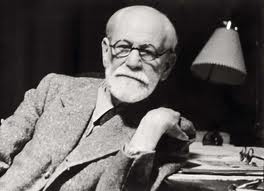 From the very beginning, he attempted to create a model of human behavior in which physical sensations gradually develop into feelings. How do emotions develop into human feelings? Put another way, how does someone go from a reflexive, reactive creature to a human being having a personality with specific intentions and a developed sense of social dynamics? How do bodily sensations lead to intentional behavior with symbolic meaning? How do biological, genetic, and experiential factors interact with one another? How does a child develop from its symbiotic relationship with its parents into a person capable of intuitively or unconsciously understanding his peers, and entering into reciprocal emotional relationships with them? What should be our understanding of the interactive relationship between mind and brain?
From the very beginning, he attempted to create a model of human behavior in which physical sensations gradually develop into feelings. How do emotions develop into human feelings? Put another way, how does someone go from a reflexive, reactive creature to a human being having a personality with specific intentions and a developed sense of social dynamics? How do bodily sensations lead to intentional behavior with symbolic meaning? How do biological, genetic, and experiential factors interact with one another? How does a child develop from its symbiotic relationship with its parents into a person capable of intuitively or unconsciously understanding his peers, and entering into reciprocal emotional relationships with them? What should be our understanding of the interactive relationship between mind and brain?
Since its beginnings, psychoanalysis has pondered these questions. Freud worked on the assertion that the quality of infantile relationships had great influence upon relationships later in development. To Freud, relationships were always of primary significance. He tried to describe his view of the interaction between biology and psychology in human behavior in “The Project for a Scientific Psychology” (1950). His inability to accomplish this is unsurprising given the state of scientific knowledge at the time, and is one of the reasons why “The Project” was published posthumously.
Today, we know that environmental variables activate the expression of biological or genetic dispositions. With this knowledge, the meaning of the concept of “development” becomes once more the focus of interest, and we see a revival of the ideas of Bowlby, with his theory on attachment, or better put, on attachment representations. Within the field of human infant research, much research focuses on the degree to which the interaction between the environment and the individual with his/her specific constitutional make up determines the nature of the development experienced by the individual. Great value is assigned to the quality of the child’s attachment relationships.
Neuroscience, Psychotherapy and Interaction
The progressive insight that behavior ultimately takes its form based on the interaction between genetic dispositions and experiences, leads to the conclusion that the old distinction between organic and functional disorders must once more be thought out. In any case that. It is no longer a question of either/or, but of both. If it is true that genetic and environmental variables mutually influence each other from the outset, then this also means that early environmental factors influence the way in which neural circuits within the human organism develop and function, and vice-versa (Pally 2000, Hart 2008).
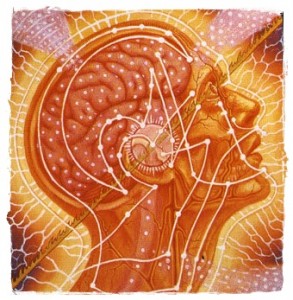
Newly acquired access to scientific research methods such as PET scans and MRIs, give impetus to the neurobiological study of the brain. The questions posed are: what is consciousness, how is it realized, how does memory work, what are emotions, what is the function of emotions and how can they be regulated – or not? Nowadays, it is generally accepted that the majority of our mental activities occur unconsciously. Increasingly, the findings of neuroscience pinpoint which aspects of the unconscious are accessible, and under which specific conditions that accessibility occurs. On the border between neuroscience and psychotherapy, more and more publications are discussing research on the neurologically traceable effects of psychotherapeutic treatments. The world of neuroscience reveals ever more evidence to suggest that the separation of somatic and psychological sciences no longer offers an effective, realistic approach.
From the start, an intersubjective relationship exists between the self and its environment, made up first and foremost of its primary attachment figures. There is a circular causality between the self and another person, but also between the brain and the mind. Fonagy adds to this that intersubjectivity is also related to attachment and mentalization. Additionally, mentalization goes hand in hand with affection and affectregulation. Furthermore, the development of mentalization assumes the acquisition of language and the possibility to use the symbolic function of language.
Psychoanalysis and Pathology
What has been said up until now implies that behavior is the result of a complex interaction between nature and nurture, between genetic vulnerability and early object relations. The behavior that is ultimately expressed depends on the manner in which early attachment relationships are internalized. Put succinctly, there are a number of risk factors when it comes to the development of psychopathology. This development revolves around the acquisition of buffers and protection against risk factors. There is no question of a direct relationship between these risk factors and the development of pathology, but there are several issues that are important to, and exert an influence on, the development of pathology. Significant, for instance, is the quality of early attachment relationships and the way in which they are internalized. The method by which an internal mental world is created also has an impact. These matters refer us to the influence of one’s mentalizing capacity and the capacity to build up mental representations. The internal representation of early experiences with primary objects also influences later relationships, as well as the creation of possible forms of psychopathology.
Underlying what has been said up until now is the genetically determined need to form an emotional connection with others in order to survive. This entails the finding of an adequate balance between autonomy and relatedness. Sometimes the balance is found by surrendering either autonomy or relatedness. Herein lie, from the perspective of psychoanalysis, the beginnings of the forming of psychopathology. Hereby, psychoanalysis links itself to attachment theory.
Relatedness and Autonomy.
The theme of relatedness or intimacy, and autonomy, are perpetually present in psychoanalytic theory. Freud (1924; 1926; 1930) speaks in this vein about “libido” and “aggression”. With libido, he refers to human tendencies having to do with “connecting” and “togetherness”, while he views “aggression” as the need to preserve one’s identity. In essence, libido boils down to connection and aggression to differentiation. Laplanche (1985; 1999) sees aggression and libido as two different aspects of the same action, i.e. feeling connected to others without losing yourself in the process. We see similar thoughts with Balint when he speaks of “clinging” behavior versus autonomy; with Fairburn and later Kohut; but just as much with Bowlby, whose well-known trilogy focuses on attachment and separation. It is S. Blatt (1992;2004;2008) that uses this distinction between the needs for autonomy and relatedness as organizing principle in his thinking on psychopathology.
The discussion about relatedness and/or autonomy started with the debate between Freud and Ferenczi. Within the group around Freud, who had to defend the real psychoanalytical truth, there was a split between Karl Abraham and Ernest Jones on the one hand, and Sandor Ferenczi and Otto Rank on the other. That split was related to the shift in psychoanalysis from being drive related to a more relational orientation. From Ferenczi there is a direct link to the British Independent group by Balint and to the American interactionalists by Clara Thompson. Both were analysands of Ferenczi as was Melanie Klein.
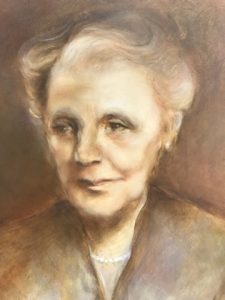
Melanie Klein by Liesbeth Dullaart
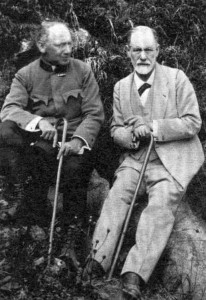
Freud and Ferenczi (1918)
Denying reality and stressing fantasy in treatment will be experienced by the patient as a lack of compassion and by that it brings in retraumatization. By all this Ferenczi was reevaluating the place of the oedipal conflict in development. Ferenczi was focusing on the primary part of the psychoanalytic relationship. It didn’t mean that he denied the transferential aspect. But for him both transference and resistance were created by the psychoanalytic couple and not only by the patient. On the other hand he overlooked the fact that in psychoanalysis the relation is unequal and characterized by the dependency of the patient in relation to the analyst. For him in psychoanalysis it is not only about presenting yourself as analyst as a new primary object who is doing better than the earlier primary objects. You should offer yourself as an object to idealize, but also as an object who is within limits failing and by that the analyst should be “murdered” or de-idealized by his patient. Idealization and de-idealization should go together because otherwise the patient is not able to function in an autonomous way. So it is not only about relatedness and intimacy, but also about failing and being autonomous, on your own. It is about positive and negative transference, it is about gratification and frustration, about match, mismatch and repair, or in terms of Bowlby: it is about attachment, separation and internalization.
Development and Pathology
The renewed attention on the concept of “development” does not mean that psychoanalytic therapy should consist of reconstructing one’s earliest years with the idea that all problems are rooted there. It does mean that from birth, individuals build internal experience models with which they confront their environment in order to anticipate that which they expect to encounter. Sometimes these internal models can be productive and constructive and lead to creativity, while other times they can be unproductive and destructive, leading to rigidity. Psychotherapy and psychoanalytic therapy are meant to be a “revision-workplace”, wherein unconstructive aspects of internal models are sought out, provoked, and revised. There is also mounting evidence that early environmental factors affect the human nervous system, emphasizing to researchers the importance of the affectionate relationship between a child and his/her caretaker(s) as it relates to the development of neuro-hormonal structures. It is unsurprising, then, that there is renewed concern for the importance of attachment representations. From the perspective of Bowlby, psychopathology is connected with the loss of or inadequacy of attachment figures and an individual’s reaction to this. Bowlby views psychopathology as having to do with pathological reactions to traumatic separations. He assumes that people are driven by a universal need for emotional bonds with others. He views this need as of the same sort earlier proposed by Darwin. For Bowlby, attachment is a result of genetic dispositions and environmental variables. Intersubjectivity and interaction are central to his thinking. As stated earlier, for him, psychotherapeutic intervention is the correction of inadequate internal models and activation of one’s attachment system. It is important to understand that old familiar patterns of behavior do not disappear or become erased, but that a new alternative is created alongside it. This means that while in severely traumatizing or frightening situations, an individual will still automatically revert to his old repertoire of behavior, the reaction will be less persistent and forceful, because there is an alternative response. By means of reward and repetition of the new behavior and discouragement of the old behavior, the old will slowly be extinguished and the new strengthened.
Other factors besides attachment also play a role in the development of a healthy individual but also in the development of pathology. This revolves around the quality of affection and attention regulation and the facilitating of mentalizing capacity along with the influence of genetic vulnerabilities within the individual.
Until now, we have emphasized a deficiency in internal models as cause for the development of pathology. In reality, internal models can also lead to the development of conflicts between internal mental representations. Here, we come upon the distinction between development and conflict pathology, also referred to as the distinction between mental process disturbances on the one hand and representation disturbances on the other.
Conscious – Unconscious
The concept of the unconscious stands at the core of psychoanalysis. Today, we know that our behavior is largely unconsciously driven. When one looks at internal models in need of adjustment, one is examining models which have been procedurally established by implicit means. By definition, this indicates that internal models work unconsciously. Adjustments or changes of said models are not executed on the basis of verbal interpretation, but on the basis of internalization of the therapeutic relationship. When speaking about the unconscious, there must be a distinction made between the “procedural unconscious” and the “dynamic unconscious”. The procedural unconscious refers to processes occurring without any degree of repression, a form of unconscious functioning which has never been conscious and therefore cannot be brought to the surface through analysis. In the case of the dynamic unconscious, contrarily, certain ideas or thoughts are considered unacceptable and must be banished or repressed. These are experiences that can be once more made conscious, either through the instrument of analysis or by the resetting in motion of a development that has become inhibited. Several systems of memory are brought to light with this distinction. We will return to this later.
Intersubjectivity and the Internal Working Model
The previous section implies that much of our behavior is unconscious, but by no means always on the basis of repression. In many cases, this stems from emotional reactions and behavioral patterns that stem from a period in our life when we could not yet access our explicit memory, but already had access to our implicit memory system.
For the therapeutic practice, this means that the psychotherapeutic bond between patient and therapist is central. Their interaction makes manifest implicit procedures, patterns of behavior and coping. The goal of psychotherapeutic treatment is to arrive at a revision of these procedures. In psychotherapeutic treatment the internal working model is first provoked and then revised. This means that the therapist offers his or herself as a new primary attachment object, and that during treatment the patient’s attachment system is activated. It is a way of regulating anxiety. Thus it is not the goal in psychoanalytic treatment to remember the past and to reconstruct forgotten, objective experiences from the past. It is not the past which is important, but the way in which the patient experiences and interacts with the therapist. The past is only used to understand the present. In treatment, implicit procedures that have taken form within internal working models and conflicts between unconscious internal mental representations are activated in the here and now.
These implicit structures, built up in the past, are created and established in an extremely complex fashion. There is constant interaction between the individual and his or her environment. Repeating patterns of interaction are gradually internalized and established, turning into what we refer to as internal working models. It is generally a pattern of interaction rather than incidental and individual experiences that is internalized. It is these working models which eventually organize and guide behavior. Internal working models contain internal representations of oneself, others, and the interaction between them. As Stern (1994) says, internal working models are the result of a natural
process of the aberration of abstracting of invariant aspects in different social situations with a special someone. These patterns have an assured stability and continuity over time.
Several matters play into the creation of internal working models: the way in which the patient was viewed and treated by his primary objects, how the patient reacted to this and the way the parent object in turn dealt with this reaction, as well as fantasies the child had regarding these matters. All of this occurs within the context of an attachment relationship. It is the quality of this attachment relationship that controls how much of, and in what manner any of this is internalized and established in the procedural memory. Psychoanalytic therapy focuses on manifesting these internal working models and correcting them where necessary.
It is important to note that these internal working models, which are established in a procedural fashion, develop alongside the development of the individual. This means that the internal working model of a child is not yet able to construct a “Theory of Mind”, and thus incapable of mentalization, looks qualitatively different than the model of an individual that does have that capability. The internalization of that which is external plays a meaningful role in this. The terms internalization and introjection are understood as the process by which the external becomes represented internally. Intersubjective realities are transformed into intrasubjective representations (Stroeken 2000). In other words, the child treats him/herself in the same way he or she was treated by his/her mother or father. On the basis of this process of internalization, the child is capable of constructing internal mental representations. When the process by which mental representations are formed is disturbed, we speak of a mental process disturbance. In such cases, entire categories of mental representations can be absent from the internal mental world, also referred to as the psychic apparatus. This can occur because the individual tries to protect him/herself against an intolerably painful confrontation with the mental representations of unbearable (traumatic) experiences. In such cases, treatment should focus upon restoring function to the stagnated mentalization capacity, such as in the treatment of personality disorders. We speak of “developmental pathology”. The process of mentalization can also be disrupted because one or more processes that are determinative in the development of mentalization capacity have been disrupted, such as the capacity for “mind reading”. In such cases treatment will not lead to a structural change. In addition to mental process disturbances, we know of disturbances related to conflicting mental representations. In such cases, certain mental representations remain isolated and do not become integrated. However, through the utilization of interpretation in psychoanalytic treatment, integration can still be achieved. By offering representation on a higher level, discongruence can be relieved and integration can still be realized. This is the case when processing intrapsychic conflicts and with neurotic “conflict pathology”.

Essential to psychoanalytic treatment is the explicit or implicit handling of the relationship between patient and therapist. The means by which this relationship is constructed are determined by experiences in the past of both the therapist and the patient. The unfolding of the internal working model within the therapeutic relationship corresponds to what was more traditionally called the development of transference and counter transference. Yet it must be noted that the manner in which transference is formed is a joint creation of the therapeutic couple and not merely a distortion of and by the patient.
Actual Neurosis and Psychoneurosis
Earlier, we mentioned the distinction between mental process disturbances and representation disturbances concerning different forms of pathology. Important here is the degree to which the mentalization capacity has been developed or stagnated. In 1895 Freud introduced the term “anxiety neurosis”, which is delineated from “psychoneurosis”. The anxiety neurosis, or “actual neurosis” (linked to the toxic anxiety theory of 1895), is of a somatic nature, while the psychoneuroses (linked to the signal theory of 1926) are of a psychic nature. In Freud’s view, there was a fundamental distinction between the two. He also called the anxiety neurosis the “actual neurosis” because it revolves around momentary anxiety where there is no element of a signal function; anxiety directly linked to the anxiety producing experience. In more contemporary terms, this is considered a not yet mentalized form of anxiety. Anxiety in this case is not a secondary or mental representation, but a primary representation, more a bodily sensation. The emotion has not yet become an affect representation.
In contrast, the psychoneuroses are in fact mental representations related to events and emotional experiences in early childhood and are linked to psychological reactions. The symptoms of the actual neurosis are bodily reactions and are not related to underlying psychoanalytic mechanisms. The actual

Freud describes the anxiety neurosis with reference to symptoms such as irritability, restlessness, expectation of unpleasant events, anxiety attacks, phobias, dizziness, tremors, sweating, breathing problems, nausea, heart palpitations, diarrhea and sleep disturbances. As will be seen later, the concept of the actual or anxiety neurosis belongs to Freud’s first anxiety theory, also referred to as the toxic theory. In the toxic theory, Freud made a distinction between bodily-determined anxieties and psychologically determined anxieties. The concept of anxiety is of eminent significance in psychoanalysis, because neurotic symptoms are seen as attempts to avoid, or make tolerable, the anxiety of the individual. Symptoms do not cause anxiety, and if anxiety does occur alongside the neurotic symptom, this generally means that the symptom has not succeeded in adequately absorbing the anxiety. Freud interprets anxiety as an affect of the ego.
In the case of a representation disturbance, the therapist will help the patient realize that a perceived danger is less threatening or, if applicable, less traumatizing than the patient had expected. In short, therapists clarify the conflict between id, ego, and superego, and by means of confrontation with external reality, show patients that their doubts and fears are out of proportion and unrealistic. The patient realizes, in turn, that the expected punishment will not occur, and the anxiety diminishes. Freud knew three sources of anxiety: reality, drives, and the superego or conscience. Thereby, he believed that the anxiety from drives and from the superego was ultimately rooted in the anxiety from reality.
When there is a dysfunction of the mental process itself, the capacity to construct internal representations is stagnated, and the capacity to internally represent the external fails. The anxiety from external reality then remains dominant; anxieties stay on the interpersonal level and do not become internal anxieties. In other words, in such cases the individual remains dependent on external reality and cannot or cannot sufficiently differentiate between fantasy and reality or between the inner and outer world. In such cases, the outer world is either threatening or loving. Such people live in an anxiety-provoking world, instead of experiencing reality as anxiety provoking. In the last case, an internal mental space is crucial.
Freud’s term “signal anxiety” then also implies that the organism is so differentiated that it can anticipate and does not have to react directly and instantaneously. In persons where the mentalizing capacity is undeveloped or insufficiently developed, the signal working of anxiety does not function adequately and the quality of the anxiety becomes more all-encompassing, growing more frantic and even traumatic. The same is true when the mentalizing capacity is temporarily blocked due to grave life events. In this case, Freud postulated that the actual neurosis was not treatable with his psychoanalytic technique grounded in interpretation of internal conflicts. Indeed, the capacity to construct conflicting internal representations fails. The body itself remains the source of the anxiety; the internal experience is not yet developed, and cannot yet take over that function. The level of social cognition has not (yet) been attained, or in the case of a temporary blockage of the mentalization capacity, is inaccessible.
Attachment
The central theme of Bowlby’s work is “attachment”: an anxiety and stress regulating system that is activated in situations of danger and loss. In other words, attachment theory is about adaptation to the environment as an important element in the manner whereby the individual and individual development take form.
Bowlby believes that the desire to establish a close relationship with the primary mother object is an inborn, instinctive tendency in the child, related to the desire to survive. The concept of attachment is central to his view of further personality development and the development of psychopathology within the individual. Emotional security, then, also has to do with the availability and the perceived trustworthiness of figures with which one can connect. To Bowlby, anxiety is always tied to becoming detached from the object of attachment. Emotional bonds between persons have a survival function; they are primary, and determinant of future personality development.
The way in which attachments are entered into varies during the different phases of development. In all cases, though, attachment behavior is a control system for surviving in a specific environment in which the primary caring object is of vital importance. Attachment behavior has an anxiety regulating function. Failure of the primary object within this response system, be it through physical absence or a lack of sensitivity to the internal goings-on of the child can be experienced by the small child as traumatic and cause anxiety to increase. Based on earlier experiences, each child constructs, in his/her own internal world, working models with regard to him/herself, others and their corresponding interaction patterns. On this basis, he/she can interpret and anticipate his/her future experiences; internal working models are also important in making anxiety manageable. Experiences of the young child are significant in development. In addition to this, Bowlby emphasizes the importance of environmental factors.
As previously stated, Bowlby puts a strong emphasis on the importance of intersubjectivity, i.e. an adequate, responsive and sensitive interaction between the primary caring object and the child. In addition to the interaction and internal state of the primary caring object, what a child brings from within himself also plays a role in the interaction. Along with nurture, nature and the interaction between the two also play a role in the development of pathology. Of importance are genetic vulnerabilities interacting with the primary environment, i.e. vulnerabilities and the construction of protective buffers.
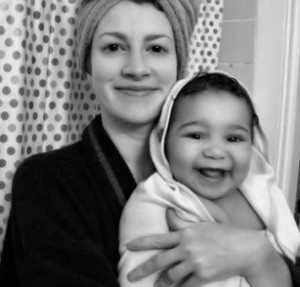
Attachment is linked to the primary aspects of the relationship and is activated in situations of danger, thus linked with separation and loss. Each individual searches for his optimal form of security. Security is tied to being connected to others without losing yourself, and to being yourself without losing others. By means of specific attachment strategies the individual attains his optimal balance between distance and proximity, between autonomy and relatedness. Based on his experiences with attachment objects, attachment strategies are internalized, becoming (internal) attachment representations, established by implicit means in the internal working model. In other words, attachment representations are implicitly established procedures for avoiding anxiety.
Affect Regulation
At the outset of development, there are not yet any mental representations. The representations are present are primary and bodily. These representations not be perceived as symbols or references to something else. At issue are the processes by which someone is capable of allowing another to be mentally present. Someone who is capable of representing oneself or another is capable of developing thoughts and feelings regarding oneself and others, and to think about it. In the absence of this capability, we speak of mental process disturbances.
The child does not yet “have” feelings, rather he or she “is” his/her feelings. At that moment in development, the self is still a “bodily” self – there is not yet a “psychological” self. The development proceeds from the outside in, from “soma” to “psyche”. Of eminent importance to this development is the manner in which caring objects mirror their small child and are attuned to his/her needs and desires. The child is not yet mentalized, and does not experience his/her behavior as his/her behavior, nor does he/she experience his/her behavior as intentional. The self more or less coincides with the soma. Communication proceeds at that point via behavior. Somatization is at that moment not a defense against “feeling” or a reaction formation, it is what it is. Behavior is at this time momentary, concrete, and unintentional.
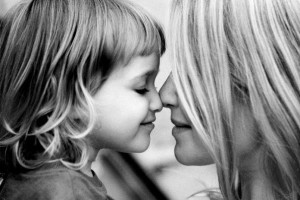
Of importance is that the primary objects contain the emotions of the child, digesting and converting them, as it were, into feelings. That is what we mean when we say that the primary objects regulate the child’s affection through “affect representation”. If executed correctly, they do this through the accurate and marked reflecting of affects, by giving meaning to the affects, and thus by approaching the child as though he were an intentional being. With this, the representations become adequately anchored in the inner world of the child as mental representations. We refer to emotions with regards to unmentalized bodily sensations, in which biology and genes play a primary role. We speak of feelings or affection when concerned with mental representations; from that moment on , psychology is also a factor. It is mentalization that transfers emotions into affects, in which the symbolization capacity plays a role. From that moment on, memories, fantasies and dreams play a significant role. The development proceeds from outside in, from soma to psyche. Affection representation can also proceed inadequately, for example, through unmarked mirroring, or by being insensitive to what is happening within the child. Such inadequately working processes will often lead to an inadequate affect regulation. For example, to the underregulation of the affect, as is the case with inadequately marked mirroring, or to the overregulation of the affect, as can be the case of missing or failing sensitivity.
In other words, the child learns how to regulate his/her affection via the caring objects who regulate affections via affect representation. Affect regulation is obtained within the early attachment relationships. The quality of the affect regulation is linked with the quality of the relationship the child has with his/her primary caring objects. Affect regulation is influenced by the quality of the mirroring of the child by his parent objects. But here the genetic/biological vulnerabilities of the child can also influence the ultimate development and quality of the affect regulation.
The quality of early attachment relationships have an influence on the manner in which the individual is able to regulate his/her attention and affections, the manner in which he/she sets internal priorities, the manner in which the individual does or does not filter external input, and the manner in which the child develops a sense of personal identity. In addition, the quality of early attachment relationships is important for the degree to which the mentalizing capacity can develop. There is a relationship between the nature of affect regulation and the nature of the attachment style. Those are:
• Secure Attachment
They have the capacity to calm themselves and modulate their affect. They have found an adequate balance between autonomy and intimacy. They can be by themselves without losing others, and be with others without losing themselves. The primary objects reacted in an adequate and consistent fashion to the affective signals of their children. There will be a disposition to function at the reflective mode, as Fonagy says.
• Avoidant Attachment
They must trust their cognitions, since the meaning and signal function of affect is absent in them. They minimize their need for intimacy and maximize their need for autonomy. They overregulate their affect. The primary objects consistently ignored affect signals from their children. There will be a disposition to function at the pretend mode, as Fonagy says.
• Preoccupied Attachment
They fail in the use of their cognitions for regulating their affect; they underregulate their affect. They are clingy, and maximize their need for intimacy. They minimize their need for autonomy. The primary objects reacted inconsistently to expressions of affect from their children. There will be a disposition to function at the equivalent mode, as Fonagy says.
• Disorganized Attachment
They are unable to regulate their affect and calm themselves. They cannot be alone, nor can they be intimate with others. The primary objects were simultaneously the source of security and of danger. There will be a disposition to function at the dual mode, as Fonagy says.
Blatt et al. (1992;2004;2008) connect the different attachment styles to the presence of two basic human needs that mutually affect one another. They are on the one hand, the need of the individual to connect him/herself with others, and on the other hand, the need for a personal, autonomous identity. Blatt sees these as two organizing principles characteristic of human functioning: the need to connect and, contrarily, the need to profile oneself as an autonomous object. Two opposing tendencies that already became apparent with Freud’s distinction between libidinous and aggressive pursuits. Laplanche holds a bit different position; he sees autonomy and relatedness as two different poles of the same tendency. In the absence of an adequate balance between both needs, pathology occurs, as Blatt (2008) shows:
• “Anaclitic Pathology”:
Typified by an extreme need for relatedness; preoccupation or entanglement. The need for relatedness is maximized and the need for autonomy is minimized. The adage here is, “I cannot be alone”, for instance in the case of dependent, histrionic, or borderline personality disorder. The primary objects are aware of what goes on within the child but are unable to adequately differentiate this from what they themselves are experiencing. Fonagy refers to this as failing responsivity. (See also Dozier, 1999; Slade, 2000 and Bakerman-Kranenborg, 2009.) The patient is functioning in the equivalent mode, as Fonagy proposed.
• “Introjective Pathology”:
Typified by an extreme need to maintain personal autonomy. The need for autonomy is maximized and the need for relatedness is minimized. The adage here is: “I can do it myself”. This is the case with, for example, schizoid, schizotypal, narcissistic, antisocial, and avoidant personality disorder. The primary objects are chiefly focused on what is happening within themselves, and not on the needs and wishes of the child. Fonagy refers to this as failing sensitivity. (See also Dozier, 1999; Slade, 2000; and Bakerman-Kranenborg, 2009.) The patient is functioning in the pretend mode, as Fonagy proposed.
Mirroring
For an adequate development that proceeds normally, the child must have the experience that there is someone who carries the child along with him of her in his or her mind. “The child has to experience a mind that had its mind in mind.” (Bateman and Fonagy 2004.) This other person should be capable of anticipating and reflecting the feelings and intentions of the child (adequate sensitivity) in such a manner that the child does not become overwhelmed (adequate responsivity). If the parent is able to understand the child’s affective state and intentions, and give these back to the child, the child will feel recognized in the parent, learning through the process of successful/unsuccessful recognizance how to know and express him/herself, with the result that the child can mentally represent him/herself and the parent/other. The (bodily) self has become a psychological self.
The consequences of poorly matched mirroring are, in essence, twofold, and are dependent on what goes wrong in the process of mirroring:
1. The caring object does resonate accurately, but does this in an unmarked fashion. This means that the object is incapable of adequately making a distinction between what the child is and what the caring object is, with the result that no differentiation can develop within the child between mental representations of him or herself and the parent/other. Thus there is a failing responsivity: the containment fails, the child feels overwhelmed, the experience escalates, and everything is experienced as too realistic. With this, reality becomes a threatening one, and the only way to keep a grip on this troubling reality is by controlling and manipulating others. In terms of development psychopathology, this is an internalizing pathology, in which the need for intimacy is maximized and the need for autonomy is minimized.
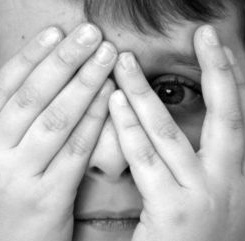
2. In the second case, the caring object reacts from his/her own affective state, and cannot give back the internal state of the child. This is a failing sensitivity. The child cannot learn to know and express his/her own self. The result of this is that an introjected self of the caring object (alien self) develops within the self of the child, in which case no mental representation of the self and others can develop. Indeed, the self is not seen by the caring object. The internal experience is not very real; there is an internal emptiness and a “false self” development. In development pathology terms, this is an externalizing pathology, in which the need for autonomy becomes maximized and the need for intimacy minimized.
In both cases mentioned above, a stagnation occurs in the development from the bodily into the psychological self. In the terms of Fonagy and Bateman, the child develops a mental process disturbance and develops no coherent psychological self that can experience itself as agent of its actions.
The Development of the Coherent Self
The development of a constitutional self into a coherent and mentalizing or psychological self proceeds via a number of stages. In the beginning, the self is a physical and somatic self. The representation of one’s own body is primary (not mentalized); the child registers that if he or she pushes something, it moves. Fairly quickly (within +/- three months), the child becomes oriented to the social outside world, and the child registers that if he or she cries, mother will come. At about nine months of age, the theological stage is reached. During this period, the result that follows a particular action leads to the declaration: “Mother comes, therefore she loves me”. The reaction of the small child is determined by what is visible, audible, and tangible. Intentions are inferred from the physical reality. There is not a “theory of mind”. The physical and mental still coincide: “If mother comes, she loves me; if she does not come, she does not love me.” The child does not realize that the “not coming” can be caused by something entirely different, such as mother not having heard the child. Around the age of one and a half the child becomes intentional, and causation becomes tied to intentions. From that moment on, the reaction of the individual is determined by the intention the other person has, or is seen as having due to his/her behavior. From that moment on, there is a “theory of mind”, meaning: a coherent, comprehensive set of conceptions, needs and intentions attributed to the self and to others. The strength of Fonagy and Bateman is that they have incorporated the “theory of mind” into the emotional attachment the child has to primary caring objects. From that moment on, the child can mentalize, and the self becomes a representational self, in the sense that it will realize it is capable of contemplating its own thoughts and the thoughts of others. At that moment, emotions become feelings, i.e. mental representations, and the child is capable of functioning reflectively.
A coherent self is capable of mentalization. This means it can contemplate both its own and others’ thoughts, wishes, fantasies, and views. This means that the self experiences itself as the intentional and mental organizer of its behavior; the self as agent is present. Mentalization is tied to both the self as agent and to the represented self. In other words, it is connected with the “I” and with the “me”. In the case of mental process disturbances there is a stagnation in the teleological stage. There is an inability to see that others can have a different vision of the same reality. At the same time, there is an inability to distinguish between external reality and internal reality (the representation of the external reality). These people do not realize that their behavior, as well as the behavior of others, is controlled by intentional mental states.
Summarizing
At the beginning of development, the self is a bodily self, doing/behavior is paramount, and there is not yet a reflective capacity. Behavior is the only form of communication possible, and therefore behavior is not (yet) a form of resistance. The interpretation of behavior as a result of intentions and motives is not useful. What is useful is the containing and connecting of behavior with intentions, and thus the search for possible motives. At the end of development, a person has developed the capacity to contemplate him/herself and others in psychological terms. He or she has constructed an internal working model on the basis of which he or she is capable of organizing his/her environment and anticipating what will happen in the future. Such an internal working model organizes the behavior of the self and of others, but selects and interprets it just as much. Behavior has attained a significance which is necessarily selective and therefore can be interpreted. At the end of development into a coherent self, the individual is capable of functioning autonomously and is no longer actually dependent on the presence of others. Finally, the dynamic unconscious has gained a place alongside the procedural unconscious; suppression has emerged. From that moment on, there is also room for internal psychic conflicts: the pathology of conflicting mental representations comes to exist.
Literature
Bakermans-Kranenburg, M.J. & IJzendoorn, van M.H. (2009). The first 10.000 adult attachment Interviews: distribution of adult attachment representations in clinical and non-clinical groups. Attachment & Human Development, 11, (3,) 223-263.
Bateman, A. & P. Fonagy (2004). Psychotherapy for Borderline Personality Disorder: mentalization based treatment. London Oxford University Press. Blatt, S.J. & Maroudas, C. (1992). Convergences Among Psychoanalytic and Cognitive-Behavioral Theories of Depression. Psychoanaly¬tic Psychology, 99, (2), 157-190.
Blatt, S. J. & Shahar, G. (2004). Psychoanalysis — With whom, for what, and how? Comparisons with psychotherapy. Journal of the American Psychoanalytic Association, 52(2), 393-448.
Blatt, S.J. (2008). Polarities of Experience: Relatedness and Self-definition in Personality Development, Psychopathology and the Therapeutic Process. Washington DC, American Psychological Association.
Dozier, M. & Stovall, K.C. & Albus, K.E. (1999). Attachment and Psychopathology in adulthood. In J. Cassidy & P.R. Shaver (Eds), Handbook of attachment: Theory, research and clinical applications (pp. 497-519) New York, The Guilford Press.
Fonagy, P. & Gergely, G. & Jurist, E.L. & Target, M. ( 2002). Affect regulation, Mentalization, and the development of the Self. New York: Other Press.
Freud, S. (1895). Über die Berechtigung von der Neurastheorie einen bestimmten Symptomencomplex als Angstneurose abzutraumen. G.W.I. London, 1940-1962: Imago.
Freud, S. (1913). Die Disposition zur Zwangneurose. G.W. VIII. London, 1940-1962: Imago.
Freud, S. (1913). Zur Einleutung in der Behandlung. G.W. VIII. London, 1940-1962: Imago.
Freud, S. (1914). Zur Einführung der Narzissismus. G.W. X. London, 1940-1962: Imago.
Freud, S. (1926). Hemmung, Symptom und Angst. G.W. XIV. London, 1940-1962: Imago.
Freud, S. (1950). Entwurf. (posthume publicatie).
Laplanche, J. (1985). Life and Death in Psychoanalysis. London, John Hopkins Press.
Laplanche, J. (1999). Essays on Otherness. London, Routledge.
Hart, S. (2008). Brain, Attachment, Personality: an introduction to neuroaffective development. London, Karnac Books.
Pally, R. (2000). The Mind-Brain Relationship. London Karnac Books.
Slade, A. (2000). The development and organization of attachment: implications for Psychoanalysis. Journal American Psychoanalytic Associations, 48, 1147-1174.
Stern, D.N. (1985). The interpersonal world of the infant. New York: Basic Books.
Stern, D.N. (1994). One way to build a clinically relevant baby. Infant Mental Health Journal, 15, 36-54.
Stroeken, H. (2000). Nieuw psychoanalytisch woordenboek, Amsterdam: Boom.
– . –
